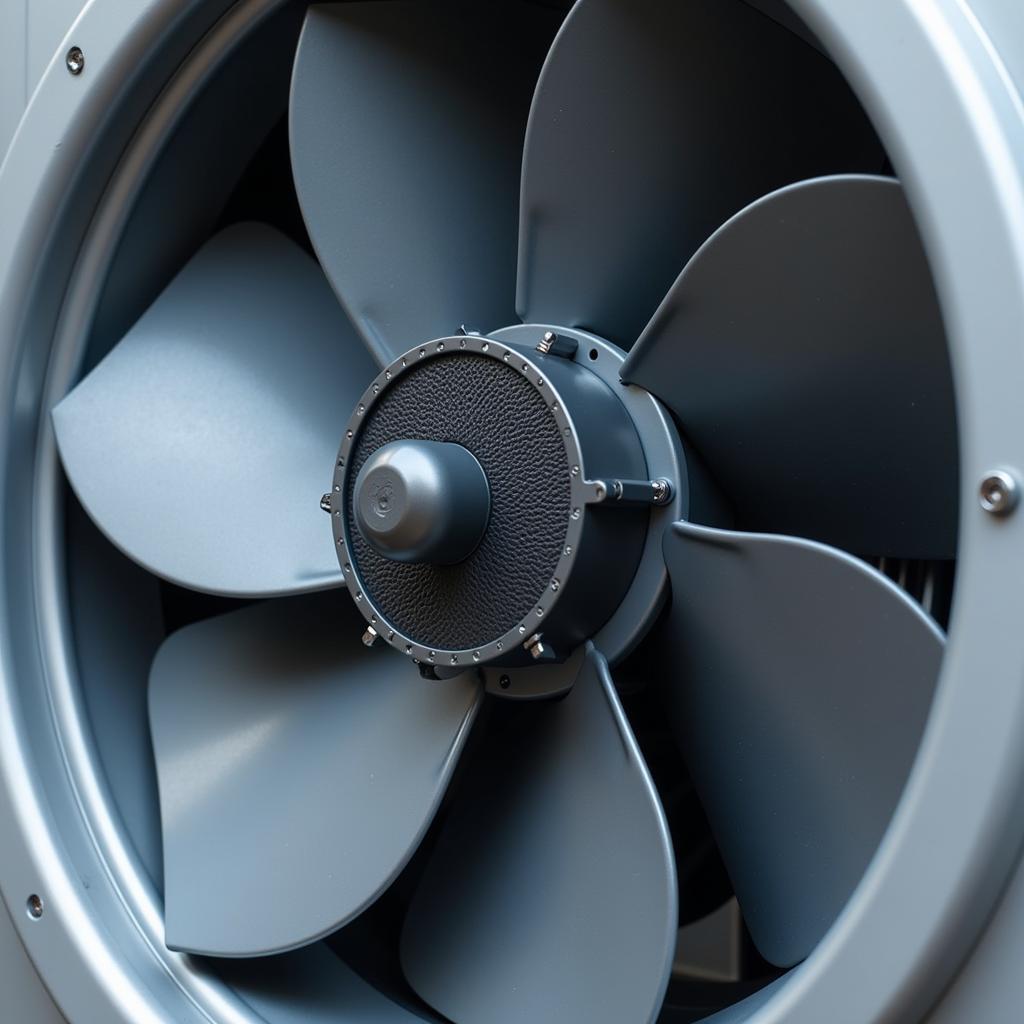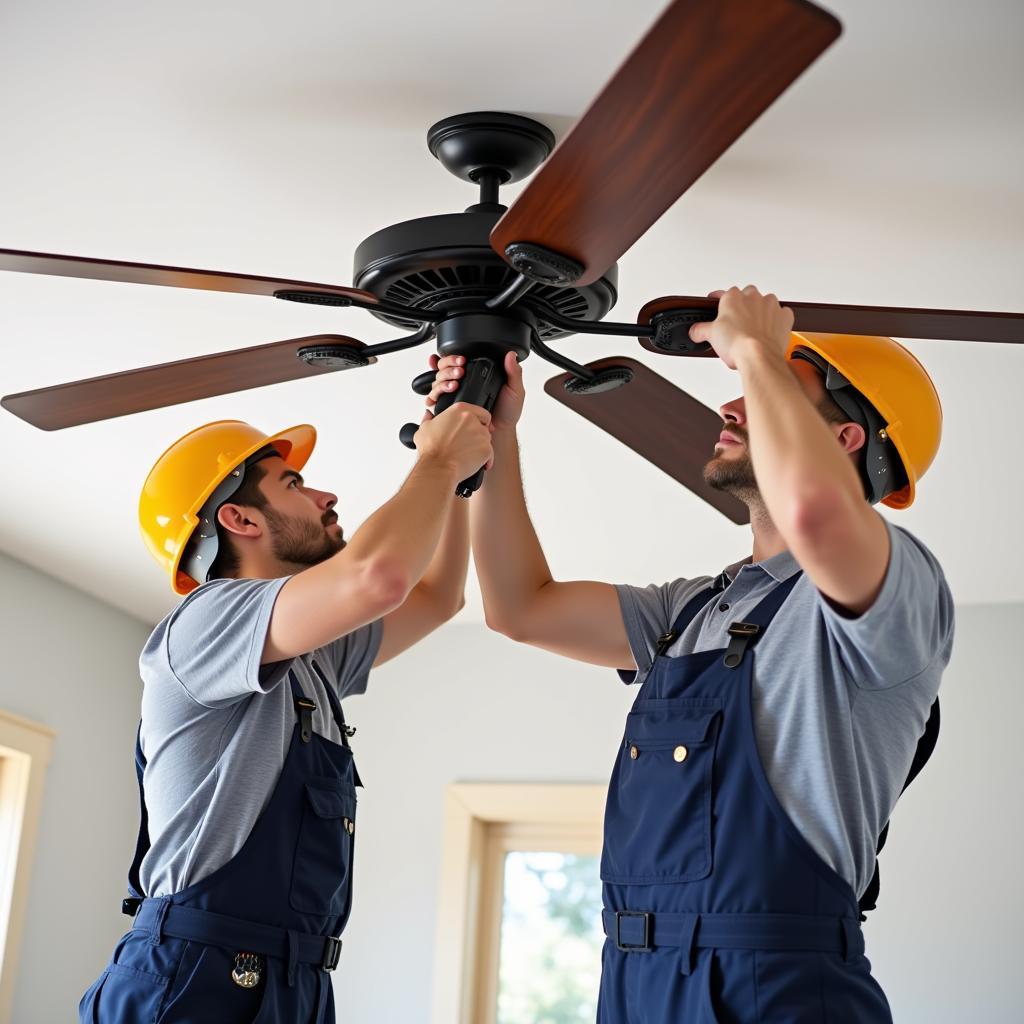PC fan airflow direction is crucial for optimal cooling performance. Understanding how to direct airflow within your computer case can significantly impact component temperatures and overall system stability. Choosing the right fans and positioning them correctly is essential for preventing overheating and maintaining a healthy system. Let’s dive into the intricacies of PC fan airflow and learn how to optimize your setup for peak performance. case fan airflow direction
Why is PC Fan Airflow Important?
Proper airflow prevents heat buildup, which can lead to performance throttling, system instability, and even component damage. Effective airflow ensures that cool air is constantly being drawn into the case while hot air is expelled, maintaining a safe operating temperature for all components.
Determining PC Fan Airflow Direction
Knowing which way your fans blow is the first step. Most PC fans have an indicator arrow on the side of the frame. This arrow indicates the direction of airflow. Sometimes, there’s also a directional marking on the fan blades themselves.
Intake vs. Exhaust Fans: Creating a Balanced Airflow
There are two main types of fan setups: intake and exhaust. Intake fans bring cool air into the case, while exhaust fans expel hot air. Creating a balanced system with both intake and exhaust is key. Ideally, you should have slightly more intake than exhaust to create positive pressure, which helps prevent dust buildup.
Front Intake, Rear Exhaust: A Common Configuration
A typical configuration involves placing intake fans at the front of the case and exhaust fans at the rear. This creates a natural airflow path, drawing cool air across the components and expelling hot air out the back.
Advanced Airflow Management: Top and Bottom Fans
Top and bottom fans can further enhance airflow. Top fans typically act as exhaust, removing heat rising from the CPU and GPU. Bottom fans are generally intake, bringing cool air directly to the GPU.
Optimizing Airflow with lian li o11 fan Configurations
Cases like the Lian Li O11 Dynamic offer great flexibility for fan placement. With multiple fan mounting points, you can create a highly optimized airflow path tailored to your specific components.
Choosing the Right Fans: CFM and Static Pressure
CFM (Cubic Feet per Minute) measures the volume of air a fan moves, while static pressure measures its ability to force air through restrictions like radiators. Choose fans with high CFM for open cases and fans with high static pressure for cases with many components or radiators. Consider các loại fan vga and fan red 8cm cho case for specific cooling needs.
 High Static Pressure Fan
High Static Pressure Fan
Conclusion
Understanding pc fan airflow direction is fundamental for maintaining a cool and stable system. By strategically positioning intake and exhaust fans, and choosing the right fans for your setup, you can maximize cooling performance and ensure the longevity of your components. Remember to consider your case’s design and the specific needs of your components when planning your airflow strategy. Knowing how to manage airflow can significantly improve your PC’s overall performance and lifespan.
FAQ
- How can I tell which way my PC fan is blowing? Look for an arrow on the side of the fan frame or on the fan blades.
- Should I have more intake or exhaust fans? Slightly more intake fans create positive pressure and reduce dust.
- What is CFM? CFM stands for Cubic Feet per Minute and measures the volume of air a fan moves.
- What is static pressure? Static pressure measures a fan’s ability to force air through restrictions.
- Where should I place my intake fans? Generally, at the front of the case.
- Are top fans intake or exhaust? Usually exhaust, removing heat rising from components.
- How can I improve airflow in a restrictive case? Use high static pressure fans.
Need help with jack chân usb cho fan tản nhiệt? We’ve got you covered!
Common Scenarios and Questions
- Overheating GPU: Consider adding bottom intake fans or upgrading your GPU cooler.
- High CPU Temperatures: Ensure your CPU cooler is properly installed and consider increasing exhaust airflow.
- Dusty Case: Check your fan configuration and ensure you have positive pressure.
Further Reading and Resources
Check out our articles on Case Fan Airflow Direction for a more detailed guide.
Need help? Contact us! Phone: 0903426737, Email: [email protected] Address: To 9, Khu 6, Phuong Gieng Day, Thanh Pho Ha Long, Gieng Day, Ha Long, Quang Ninh, Vietnam. We have a 24/7 customer support team.



